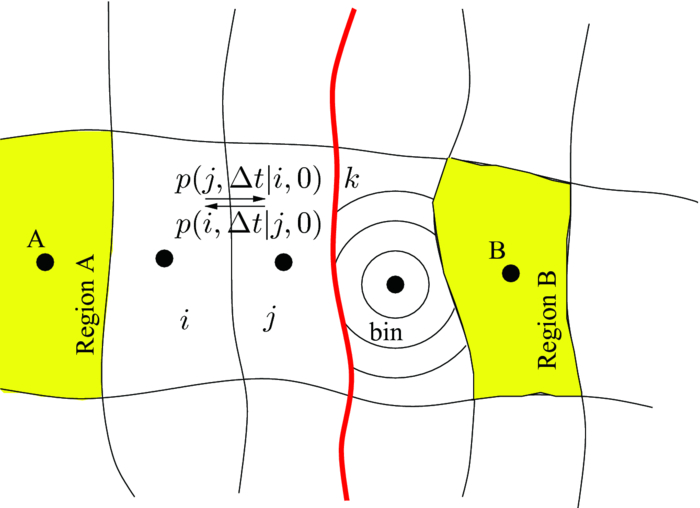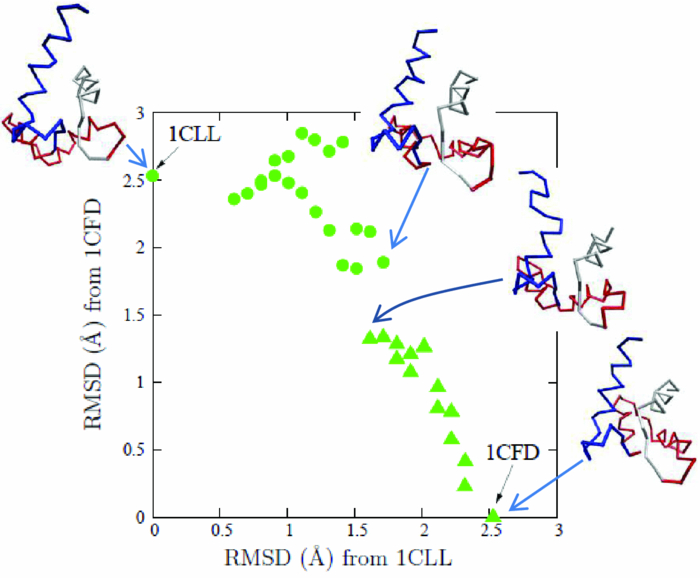An adaptive weighted ensemble procedure for efficient computation of free energies and first passage rates
By Divesh Bhatt and Ivet Bahar.
Published in Journal of Chemical Physics 137(10):104101 on September 14, 2012. PMID: 22979844. PMCID: PMC3460967. Link to publication page.
Core Facility: Computational Modeling

Abstract
We introduce an adaptive weighted-ensemble procedure (aWEP) for efficient and accurate evaluation of first-passage rates between states for two-state systems. The basic idea that distinguishes aWEP from conventional weighted-ensemble (WE) methodology is the division of the configuration space into smaller regions and equilibration of the trajectories within each region upon adaptive partitioning of the regions themselves into small grids. The equilibrated conditional∕transition probabilities between each pair of regions lead to the determination of populations of the regions and the first-passage times between regions, which in turn are combined to evaluate the first passage times for the forward and backward transitions between the two states. The application of the procedure to a non-trivial coarse-grained model of a 70-residue calcium binding domain of calmodulin is shown to efficiently yield information on the equilibrium probabilities of the two states as well as their first passage times. Notably, the new procedure is significantly more efficient than the canonical implementation of the WE procedure, and this improvement becomes even more significant at low temperatures.




